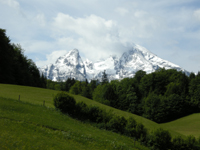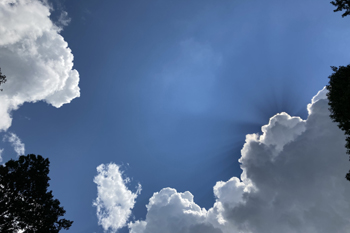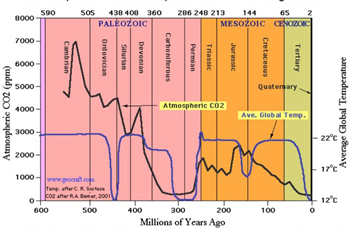Earth is billions of years old. And human civilization is over 6,000 years old. There are very unique aspects of current human civilization that may only persist for a relatively short amount of time. One of those unique characteristics is the industrial output of Carbon Dioxide (CO2).
Meaningful and substantial emissions of CO2 began in Western Civilization around 1820, when our economies began rapid growth. This emission of CO2 from human industrial activities comes primarily from transportation vehicles, factories, and electrical power plants. This is all common sense to anyone alive today, and therefore this article will be quite a waste of time for those people to read. I just thought it should be written as to what this very brief moment in the history of mankind is like.
The skys are clear, it rains maybe once per week. We can see many stars at night, with only a few visible satelites per hour. Its beautiful sitting in your yard and watching the coulds roll across the sky. There is no visible air pollution anywhere near where I live. And the air is not hazardous to breathe in.
We live in a town of roughly 12,000 people. We are surrounded by mountains which are covered in forests. Forest fires are extremely rare in our area. I rarely visit larger cities. The nearest urban center with over 1 million people is over 150 miles away. When I do visit this city I can tell the next day that I have been breathing in a larger amount of pollution.
This video shows a passenger airplane traveling across the sky. They travel at an altitude of roughly 30,000 ft and a speed of around 400 miles per hour. The aviation industry accounts for around 2.5% of global CO2 emissions. Sitting outside at our house, we might see one airplane per hour. I can barely hear them and they do not bother me at all. We have a small airport about 20 miles from our house. Only small planes can land there and it has minimal air traffic.
Our personal transportation vehicles are powered by gasoline and diesel. Today roughly 2% of new vehicle sales in America are powered only by electricity. I don't know anyone who owns an electric vehicle.
Sources of Carbon
 This diagram of the fast carbon cycle shows the movement of carbon between land, atmosphere, and oceans. Yellow numbers are natural fluxes, and red are human contributions in gigatons of carbon per year. White numbers indicate stored carbon.
This diagram of the fast carbon cycle shows the movement of carbon between land, atmosphere, and oceans. Yellow numbers are natural fluxes, and red are human contributions in gigatons of carbon per year. White numbers indicate stored carbon.Source: NASA - PDF
The diagram above shows the carbon cycle. Oceans emit ten times as much carbon as human industrial activities. Roughly 56% of carbon released by the burning of hydro-carbon fuels is absorbed by biomass on land or in the oceans, the rest remains stored in the atmosphere. Current atmospheric CO2 concentrations are about 420 ppm, this is about 0.04% of Earth's atmosphere.
Long Term Historical Record
This next image shows the regular occurrence of ice ages and atmospheric CO2 levels. These correspond with changes in Earth's orbit around the Sun. Changes in the amount of solar energy reaching Earth could perhaps affect temperatures.
Temperature changes could cause CO2 to be released from or absorbed into the oceans. Either way, this graph shows CO2 levels over the past 350,000 years.
This image shows CO2 levels over the past 600 million years. Atmospheric CO2 concentrations currently stand at 420 ppm. In 1820 that number was around 300 ppm. This increase seems to be a result of human industrial activity. But what is the 'correct' atmospheric CO2 concentration?
Plantlife has greatly expanded over the past 100 years as a result of CO2 fertilization. There are currently more trees on Earth than there were 100 years ago. 500 million years ago, the Cambrian Era saw the greatest expansion in the amount of life and variety of species. This era also experienced the highest CO2 levels in all of Earth's history at 7,000 ppm.
Originally published August 30, 2022Researched and Written by: Thomas Acreman
Sources:
Earth's Carbon Cycle - NASA - PDF
Atmospheric CO2 Concentrations - NASA - PDF
A Brief History of European Forests - Classic History
Carbon Dioxide Fertilization Greening Earth - Archived - NASA
Influence of Carbon Dioxide on Average Global Temperature During the Phanerozoic Eon by Dan Pangburn
GEOCARB III: A Revised Model of Atmospheric CO2 Over Phanerozoic Time - Archived - PDF - American Journal of Science
Forest Fire Burn Acerage in North America - fs.fed.us - Local
Related Blog Posts:
Climate Change













